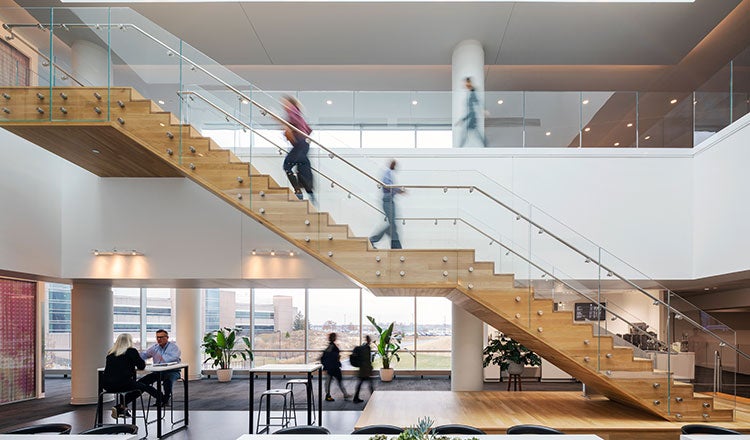
The Architecture of Trust: Lessons in Project Management
Success in architecture and engineering often hinges on two key factors: differentiated team capabilities and strong client relationships built on trust. That trust is earned through consistent, high-quality work and meaningful interactions with key team members. When we deliver great value to our clients, we create a cycle of trust, performance and renewal.
Understanding stakeholder needs, managing expectations in alignment with client leadership, and assembling a team that demonstrates strategic value and outcome-driven focus are each essential to sustaining that cycle.
With more than four decades of experience managing complex projects and cultivating long-term client relationships at HDR, I’ve learned that successful project management is multifaceted and a continuous endeavor. It requires technical expertise, clear communication and a deep commitment to client satisfaction.
The project manager is often the tip of the spear. You’re the face of the company and the consultant team, especially when resolving challenges. You have to continually realign to the greatest risks and needs.
Managing Teams and Collaboration
Of course, a project’s success depends on the performance of the entire team. It’s the project manager’s job to understand each member’s strengths and work to remove obstacles that hinder progress. Over time, a clear trend has emerged: clients increasingly view the construction manager or contractor as their most critical need. This often places the design team in the position of communicating to client leadership the long-term impacts of procurement or construction-phase decisions made to accelerate schedules or reduce costs.

Science and technology projects face a unique blend of challenges such as complexity, cost and schedule pressures, evolving client visions, and the capabilities of construction managers and subcontractors. These external pressures often intersect with internal ones such as staffing changes, competing priorities and time off, making trust and mutual support within the team essential.
While a project manager can’t eliminate every hurdle, they must understand what each discipline needs at different phases and facilitate collaboration. The more interdisciplinary knowledge a PM has, the better they can balance feedback from both the team and client stakeholders. This helps keep the project focused on its critical path.
Success doesn’t mean avoiding challenges, it means working to create a shared vision, by exploring options, how those options address differing needs, and guiding the team through solutions. In the diverse world of science, project goals may vary as well as the sciences and needs, but many planning strategies and technical solutions share a common language, whether the work involves biological containment or consumer product innovation.
Building Trust Through Communication
Clients need to see that we understand their goals and are genuinely working to achieve them. That’s how trust is built, and once it’s established, it allows the design team’s recommendations to be heard and considered. Project leaders serve as agents for both the client and the team. This dual role requires a deep understanding of the client’s internal pressures and performance expectations. At times, it also means helping the client understand why the design is evolving in a particular direction, as disciplines communicate priorities and options.
Clients typically focus on cost, schedule and quality, but always in the context of risk. A project manager must be able to identify, prioritize and respond to those concerns. Confidence and competence are also key. Clients need to see how we’re solving their problems through tailored creativity and refined, proven solutions.
When a problem arises, as the project manager you have to communicate that you’ve done this before. Maybe not the exact problem at hand, but you’ve solved thousands of others with similar elements in previous experience.

The ultimate measure of success is whether the client wants to work with the team again. Long-term relationships are built on trust, performance and the ability to deliver solutions that meet current and future needs. Projects like the Procter & Gamble Mason Business Center campus illustrate this, with facilities that continue to drive innovation 30 years after their initial construction.
Sustaining Relationships and Adapting to Change
HDR’s enduring partnership with Procter & Gamble reflects the value of long-standing relationships despite being “out of state.” Clients often prioritize problem solvers, with directly involved team members who present an image of being able to work together, and trust in the right outcomes must be earned through consistent performance.
If I’m doing my job well as project manager, I’m helping the client understand critical pressures. But to do that, I have to understand the team’s pressure points and weave them into the broader challenge — whether it’s schedule, budget, market shifts or internal changes within the client’s organization.
Our approach centers on bringing the right people to the table and empowering them to deliver. Change is inevitable, especially in complex or first-of-its-kind projects. The key is to anticipate a changing environment, adapt quickly and make informed decisions that accommodate new requirements with minimal disruption.
Project leadership, whether within a discipline or at the PM level, is dynamic and rarely simple. By building trust, fostering strong client relationships, continuously learning, and working to communicate “what can be done” and not just “saying what can’t be done,” we lay the foundation for successful project delivery and enduring partnerships.



